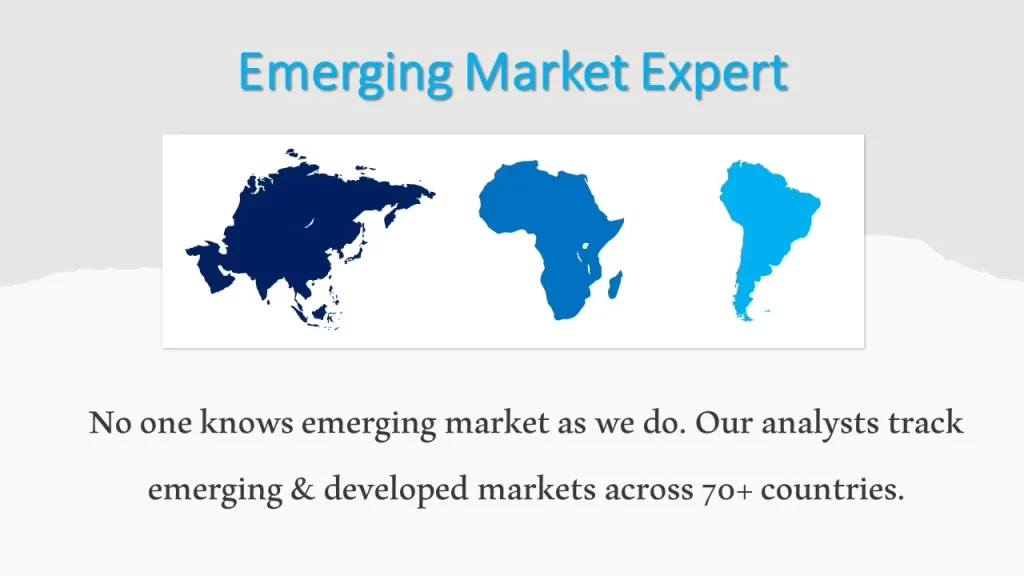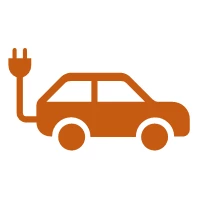Electric Vehicle Market Size, Share, Forecasts, Growth & Analysis Report by Battery Type (Lead-Acid, Nickel Metal Hydride, Lithium-Ion, Sodium Nickel Chloride, and Others), By Product Type, By Vehicle Class, By Vehicle Type, and By Region – Global Opportunities & Forecast, 2021-2028
GMI Research analysis indicates that the Electric vehicle market estimated at 161.3 Billion in 2020 and is slated to register a double digit CAGR of 25.3% over the period, 2021-2028 and is projected to reach USD 980.0 Billion in 2028.
Introduction of the Electric vehicle Market Report
Electric vehicle, also called EV, derives all or part of their power from the electricity which is supplied by the electric grid. These vehicles use a large battery pack to provide power specifically to component and need to be plugged into a wall outlet or charging equipment. The market for electric vehicles covers different types of vehicles, which include Battery Electric Vehicle (BEV), Hybrid Electric Vehicle (HEV), Plug-in Hybrid Electric Vehicle (PHEV), and Fuel Cell Electric Vehicle (FCEV).
To have an edge over the competition by knowing the market dynamics and current trends of “Electric vehicle Market”, request for Sample Report here
Market Dynamic
Key Drivers and Emerging Trends
Emerging need for low emission vehicles and strategic government support to encourage the production of electric vehicles are the two major drivers fueling the electric vehicle market growth. For example, in 2019, the government of Germany and auto manufacturers decided to raise cash incentives under the “Environment Bonus” plan for battery-driven cars. The incentives will reach up to USD 6,680 per vehicle and the auto industry to cover half the cost. Also, in 2019, the Indian government of India announced its plans to spend USD 1.4 billion to subsidize sales of hybrid and electric vehicles until 2022. In addition, increasing investment in electric vehicles by leading market players such as Ford Motor Company, Groupe Renault, among others will strengthen the Electric Vehicle Market Size. For example, in 2018, Daimler AG decided to invest worth USD 20.0 billion for the purchase of battery cells for electric vehicles. The company intends to automate its Mercedes Benz portfolio until 2022 with around 130 EVs.
Moreover, as per the Electric Vehicle Market Forecast, with the growing environmental concern pertaining to the greenhouse gas emissions, government has enforced strict vehicle emission norms, driving the demand for electric vehicles owing to the lower emissions as compared to conventional vehicles. The adoption of electric vehicles in the residential and commercial sectors is forecast to propel the market growth. However, lack of proper charging infrastructure, fluctuations in charging load and the need of standardization are projected to hamper the Electric Vehicle Market Share.
Do you want to know more about the Research process and detailed Methodology, Request Research Methodology of this report
Product Type – Segment Analysis
Based on the product type, the BEV segment is projected to dominate the market during the forecast period. The modern BEV provides exceptional advantages such as improved level of performance, cutting-edge technology, improved connectivity level runs on less cost, and increased interior space. The combination of these benefits are pushing consumers towards the adoption of BEVs. Moreover, the BEVs have a higher range and offers better battery life.
Vehicle Class – Segment Analysis
Based on the vehicle class, the mid-priced segment is projected to dominate the market during the forecast period. China is one of the leading countries in terms of mid-priced EV production. The leading players in the market, such as BYD and Great Wall Motor, are focusing on introducing less expensive vehicles. For example, in 2018, Great Wall Motor partnered with BMW Group to produce electric MINI vehicles in China. Moreover, in 2018, the company also launched its new flagship vehicle below its new “ORA” electric car brand, which is called ORA R1.
Vehicle Type – Segment Analysis
Based on the vehicle type, the commercial segment is projected to witness a faster CAGR during the forecast period. The increasing adoption of electric buses in China and India is a major driver factor that is contributing to the growth of the market. The government of India has launched the Faster Adoption and Manufacturing of Hybrid and EV (FAME) scheme with an outlay of USD 130 million. Moreover, the scaled-up FAME II allocated USD 1.4 billion, which was to be used for upfront incentives on the purchase of EVs and to support the deployment of charging infrastructure in the country.
In case, any of your pain points areas are not covered in the current scope of this report, Request for Free Customization here
Regional – Segment Analysis:
Based on the region, Asia-pacific region is anticipated to grow at a faster CAGR over the forecast period. China is one of the leading countries in the EV market among the Asian countries. The top Chinese automotive players, i.e. BYD, SAIC, BAIC Motor, and other companies, cover the country’s maximum share of the electric vehicle market. Moreover, there has been an increase in the number of new EV manufacturers, such as Yudo, which aims to produce battery-electric SUVs. In addition to this, the leading manufacturers of electric vehicles are planning to expand their presence in the Asian countries to cater to the growing demand of the market. In 2018, Volkswagen Group announced to manufacture 22 million EVs by 2026, out of which half of the production will be done in China. Tesla Inc., launched its plan to manufacture approximately 150 thousand 3s Model cars in Shanghai, China. Thus, the increasing participation of top players in this region is driving the growth of the regional market.
Top Market Players
Numerous notable players operating in the market include Ford Motor Company, Tesla, Toyota Motor Inc., Nissan Motor, BYD Company Ltd., BMW, Volkswagen of America, Inc., Volvo Car Corporation, Daimler, and Hyundai, among others.
Key Developments:
-
- In 2022, General Motors and Honda collaborated to develop a series of cost-effective electric vehicles based on the latest architecture using next-generation Ultium battery technology. The new EV series is projected to be launched in 2027, starting in North America.
- In 2022, Honda entered into an agreement in the area of lithium-metal secondary batteries with SES Holdings Pte. Ltd, a US-based EV battery research and development company.
- In 2022, MG Motors unveiled its upcoming EV, the MG 4, which is projected to be launched by the end of 2022. The EV will be incorporated with a 61.1 kWh battery pack and is expected to run around 400 km.
- In 2022, Volkswagen developed its ID.5 model based on the Skoda Enayaq iV model. The vehicle is projected to possess a range of around 300 miles on 1 charge.
- In 2021, Volkswagen of America, Inc., launched pilot plant for recycling of EV batteries in Salzgitter. The company will recycle EV battery recycling yields nickel, lithium, manganese, cobalt, aluminium, copper, plastics, and graphite.
- In 2019, BYD Company Ltd., entered into an agreement with Toyota Motor Corporation for the establishment of a joint venture to conduct research hand development of battery electric vehicles (BEVs).
- In 2019, Tesla launched its fully electric Model Y, with a capacity to carry 7 passengers and their cargo. This electric car has two-ultra responsive, independent electric motor, that controls torque to the front and rear wheels.
Segments covered in the Report:
The global electric vehicle market has been segmented based on battery type, product type, vehicle class, vehicle type, and regions. Based on battery type, the market is segmented into lead-acid, nickel metal hydride, lithium-ion, sodium nickel chloride, and others. Based on product type, the market is segmented into battery electric vehicle, hybrid electric vehicle, plug-in hybrid electric vehicle and fuel cell electric vehicle. Based on vehicle class the market is segmented into luxury and mid-priced. Based on vehicle type, market is segmented into, passenger car and commercial vehicle.
For detailed scope of the “Electric vehicle Market” report request a Sample Copy of the report
Key questions answered in this research report:
-
- At what pace is global electric vehicle market growing? What will be the growth trend in the future?
- What are the key drivers and restraints in electric vehicle market? What will be the impact of drivers and restraints in the future?
- What are the regional revenues and forecast breakdowns? Which are the major regional revenue pockets for growth in the global electric vehicle market?
- Which battery type generated maximum revenues in 2020 and identify the most promising battery type during the forecast period?
- What are the product type component areas of global electric vehicle market and how they are poised to grow?
- What companies are the major participants in this market and their business strategies, how does the competitive landscape look like?
|
Report Coverage |
Details |
| Market Revenues (2020) |
161.3 Billion |
| Market Base Year |
2020 |
| Market Forecast Period |
2021-2028 |
| Base Year & Forecast Units |
Revenues (USD Billion) |
| Market Segment | By Battery Type, By Product Type, By vehicle class, By Vehicle Type, By Region |
| Regional Coverage | Asia Pacific, Europe, North America, and RoW |
| Companies Profiled | Tesla, Nissan Motor, BYD Company Ltd., BMW, Volkswagen of America, Inc., Toyota Motor Inc., Ford Motor Company, Volvo Car Corporation, Daimler, and Hyundai, among others; a total of 10 companies covered. |
| 25% Free Customization Available | We will customize this report up to 25% as a free customization to address our client’s specific requirements |
Market Segmentation
Global Electric vehicle Market by Battery Type
-
- Lead-acid
- Nickel Metal Hydride
- Lithium-ion
- Sodium Nickel Chloride
- Others
Global Electric vehicle Market by Product Type
-
- Battery Electric Vehicle (BEV)
- Hybrid Electric Vehicle (HEV)
- Plug-in Hybrid Electric Vehicle (PHEV)
- Fuel Cell Electric Vehicle (FCEV)
Global Electric vehicle Market by Vehicle Class
-
- Luxury
- Mid-Priced
Global Electric vehicle Market by Vehicle Type
-
- Passenger Car
- Commercial Vehicle
Global Electric vehicle Market by Region
-
- North America Electric vehicle Market (Option 1: As a part of the free 25% customization)
- By Battery Type
- By Product Type
- By Vehicle Class
- By Vehicle Type
- US Market All-Up
- Canada Market All-Up
- Europe Electric vehicle Market (Option 2: As a part of the free 25% customization)
- By Battery Type
- By Product Type
- By Vehicle Class
- By Vehicle Type
- UK Market All-Up
- Germany Market All-Up
- France Market All-Up
- Spain Market All-Up
- Rest of Europe Market All-Up
- Asia-Pacific Electric vehicle Market (Option 3: As a part of the free 25% customization)
- By Battery Type
- By Product Type
- By Vehicle Class
- By Vehicle Type
- China Market All-Up
- India Market All-Up
- Japan Market All-Up
- Rest of APAC Market All-Up
- RoW Electric vehicle Market (Option 4: As a part of the free 25% customization)
- By Battery Type
- By Product Type
- By Vehicle Class
- By Vehicle Type
- Brazil Market All-Up
- South Africa Market All-Up
- Saudi Arabia Market All-Up
- UAE Market All-Up
- Rest of world (remaining countries of the LAMEA region) Market All-Up
- North America Electric vehicle Market (Option 1: As a part of the free 25% customization)
Major Players Operating in the Electric vehicle (Option 5: As a part of the Free 25% Customization – Profiles of 5 Additional Companies of your Choice)
-
- Tesla
- Nissan Motor
- BYD Company Ltd.
- BMW
- Volkswagen of America, Inc.
- Toyota Motor Inc.
- Ford Motor Company
- Volvo Car Corporation
- Daimler
- Hyundai
Frequently Asked Question About This Report
- Published Date: Apr - 2021
- Report Format: Excel/PPT
- Report Code: UP2053-001001
Licensing Options
Single-User License:
The report is used by the purchaser (One Individual) only
Multi-User License:Report is shared with maximum 5 users (employees) including the purchaser of the purchasing corporation only
Corporate License:
Report is shared with unlimited user (employees) of the purchasing corporation only
The report is used by the purchaser (One Individual) only
Multi-User License:Report is shared with maximum 5 users (employees) including the purchaser of the purchasing corporation only
Corporate License:
Report is shared with unlimited user (employees) of the purchasing corporation only
Electric Vehicle Market Size, Share, Forecasts, Growth & Analysis Report by Battery Type (Lead-Acid, Nickel Metal Hydride, Lithium-Ion, Sodium Nickel Chloride, and Others), By Product Type, By Vehicle Class, By Vehicle Type, and By Region – Global Opportunities & Forecast, 2021-2028
$ 4,499.00 – $ 6,649.00
Why GMI Research







